Earlier this year I was invited to judge a category of the Guild of Food Writers’ Book Awards. I was reminded of the years spent as a librarian buying non fiction titles for public libraries. Would evaluating cookery books, forty five years later demand a different set of skills?
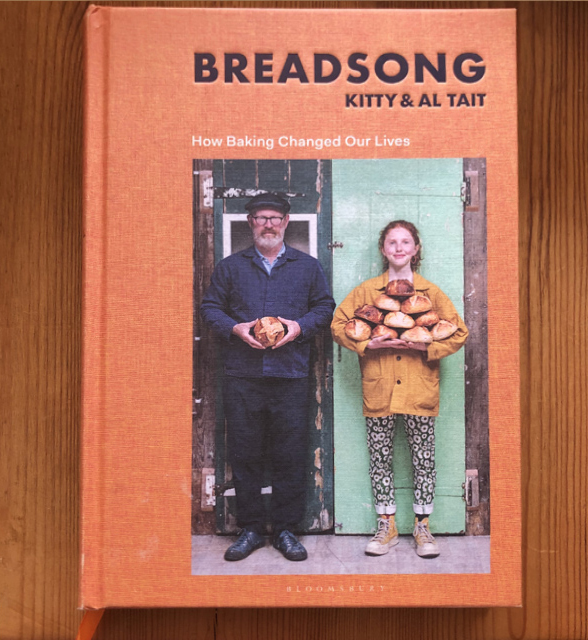 I decided the aim of each cookery book had to be clearly communicated, to leave a lasting impression on me. In Kitty and Al Tait’s Breadsong there are two aims, the first to explore how bread making became a practical solution to managing mental health and secondly a series of recipes begging to be baked. I read the first part of the book in one sitting, I could not put it down as I was drawn into the story of how a bubbly teenager became a shadow of her former self, until her Father, Al introduced her to bread.
I decided the aim of each cookery book had to be clearly communicated, to leave a lasting impression on me. In Kitty and Al Tait’s Breadsong there are two aims, the first to explore how bread making became a practical solution to managing mental health and secondly a series of recipes begging to be baked. I read the first part of the book in one sitting, I could not put it down as I was drawn into the story of how a bubbly teenager became a shadow of her former self, until her Father, Al introduced her to bread.
That opened up a world of flavours and skills from making an overnight loaf to conquering sourdough, something that resonated with me! Fast forward to the present day and Kitty and Al have a bakery in Watlington in Oxford and a book that’s flying off the shelves in bookshops. For the purpose of my review, with so many recipes to try, I focused on the ones I felt would work well with preserves, chiefly marmalades, jams and chutneys.
Biga Bread p162
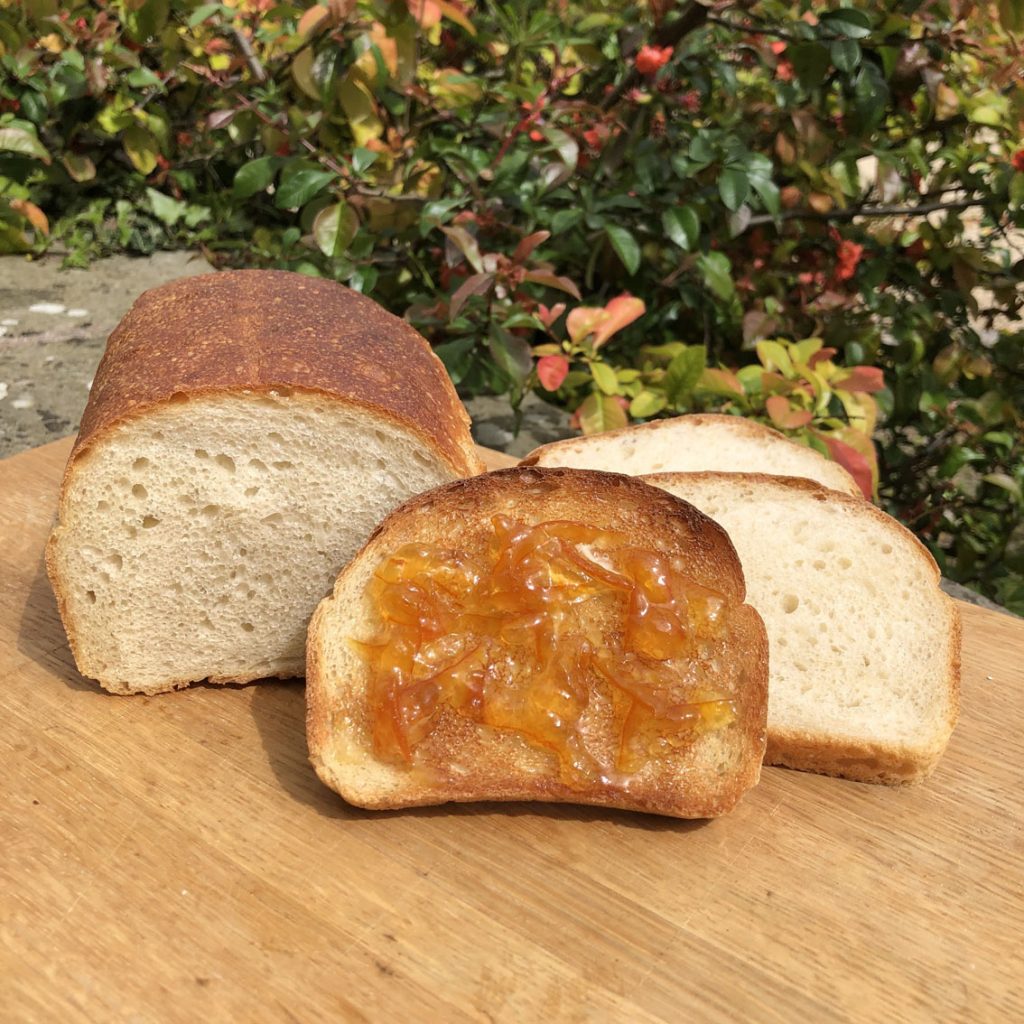 This recipe introduces the reader to a simple and effective way of making bread using the no knead method pioneered by Jim Lahey. The recipe makes two loaves and for me they would be good ones to share with our B&B guests, to have toasted and spread with butter and marmalade.
This recipe introduces the reader to a simple and effective way of making bread using the no knead method pioneered by Jim Lahey. The recipe makes two loaves and for me they would be good ones to share with our B&B guests, to have toasted and spread with butter and marmalade.
Bialys p176
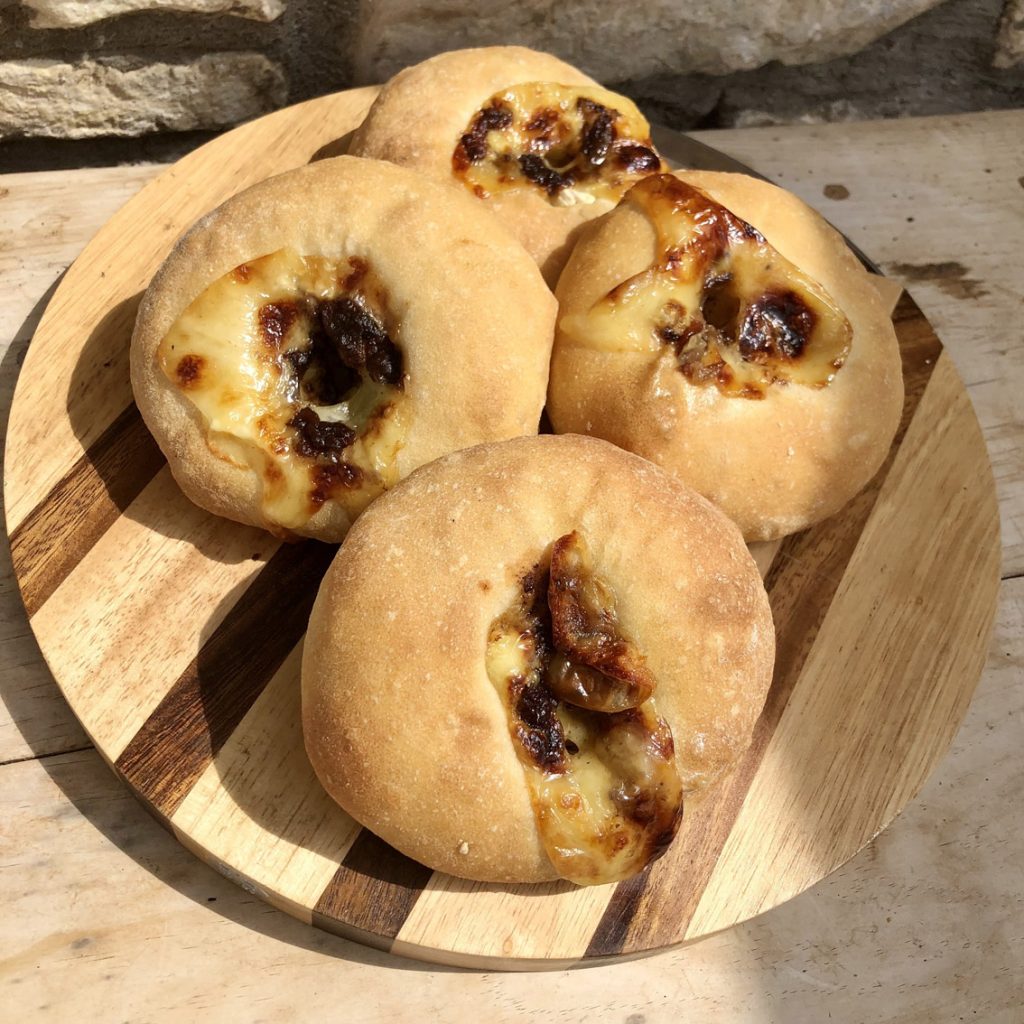 These little gems from Poland were new to me, a soft white ball of dough with a savoury filling. I went for the Camembert and Chutney option, using date chutney, my go to chutney when making a Brie en Brioche. The filling oozed out when they were cut open and Bialys would make the perfect portable picnic food.
These little gems from Poland were new to me, a soft white ball of dough with a savoury filling. I went for the Camembert and Chutney option, using date chutney, my go to chutney when making a Brie en Brioche. The filling oozed out when they were cut open and Bialys would make the perfect portable picnic food.
Sourdough p186
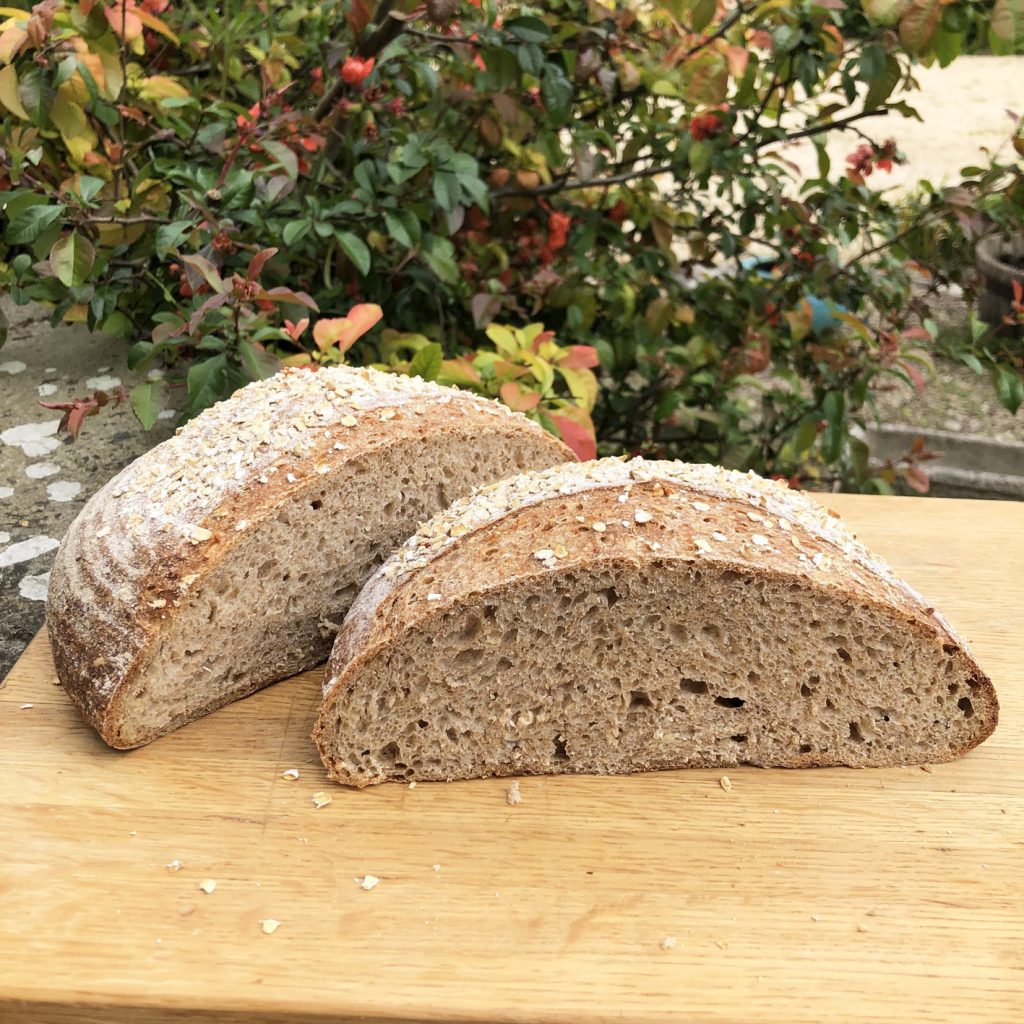 As a visual learner, I appreciated the illustrated Journey of a Starter in 7 Days, a clear depiction of the stages when creating a sourdough starter. With so many different ways to make a starter, this version would appeal to me if I was starting sourdough from scratch. Of all the sections in the book, the sourdough one kept pulling me back to re-read and pull out my starter Patience ( named as a fitting tribute to a starter that spends many days in a fridge waiting to be reborn into bread) from the fridge to create a levain.
As a visual learner, I appreciated the illustrated Journey of a Starter in 7 Days, a clear depiction of the stages when creating a sourdough starter. With so many different ways to make a starter, this version would appeal to me if I was starting sourdough from scratch. Of all the sections in the book, the sourdough one kept pulling me back to re-read and pull out my starter Patience ( named as a fitting tribute to a starter that spends many days in a fridge waiting to be reborn into bread) from the fridge to create a levain.
Our Ultimate Sourdough Bread. p193
Reading through the instructions and the variations on the sourdough theme, I was intrigued by the Porridge Bread and wondered if it would pare well with marmalade as well as jam as suggested in the text. After leaving the dough resting snugly in a banneton in a fridge overnight, the next morning I was rewarded with a well proved dough ready for baking. The bread kept its shape and once cooled and cut revealed an even crumb, good for toasting ready for butter, marmalade or jam.
Cider with Rosie. p200
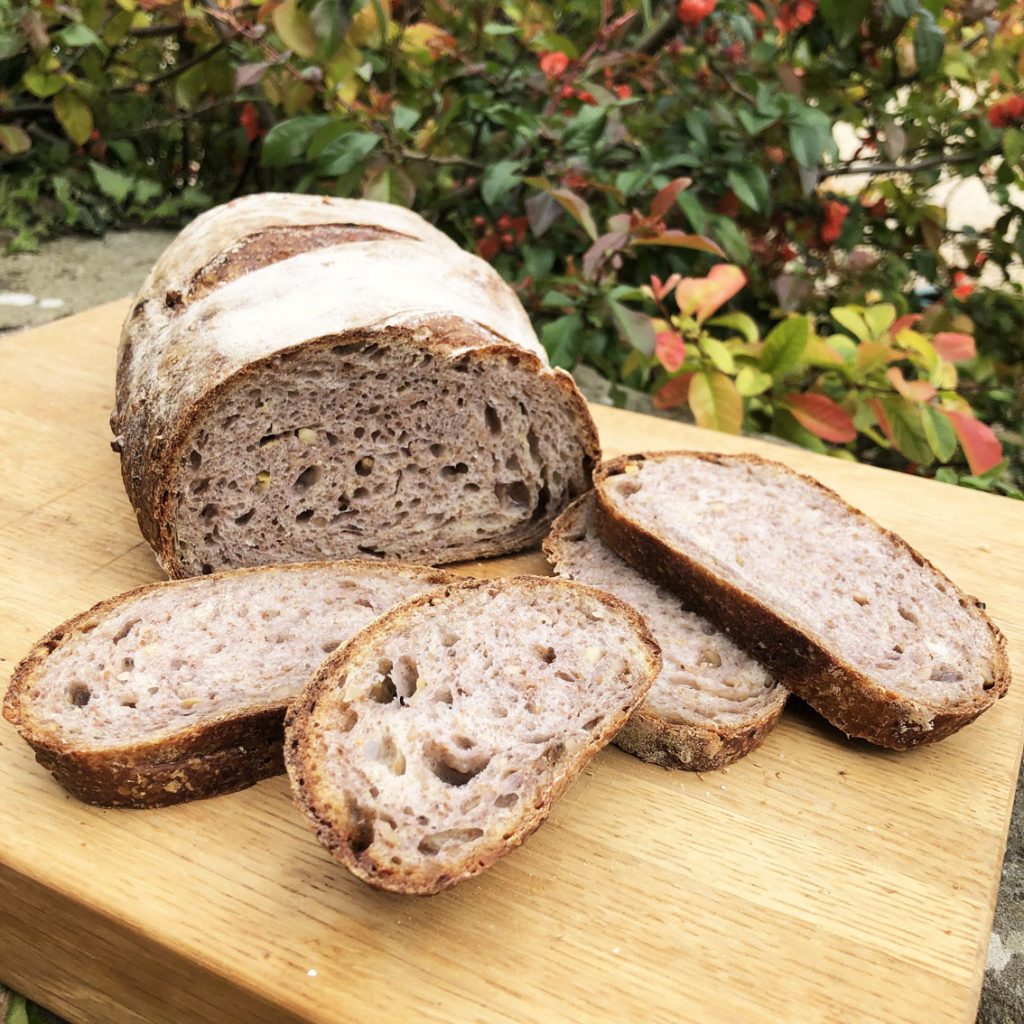 A sourdough with attitude as I discovered when making this recipe. Using cider from a neighbour, I mixed up the ingredients, curious to know how adding cider ( a first for me) to a dough would work with the fermentation and the flavour, mixed with cheese and walnuts. It all sounded mouthwatering and once again, an overnight prove in the fridge helped stabilise the dough and strengthened the flavour.
A sourdough with attitude as I discovered when making this recipe. Using cider from a neighbour, I mixed up the ingredients, curious to know how adding cider ( a first for me) to a dough would work with the fermentation and the flavour, mixed with cheese and walnuts. It all sounded mouthwatering and once again, an overnight prove in the fridge helped stabilise the dough and strengthened the flavour.
Once cooled and sliced the bread was very sourdough in appearance and the flavour was a glorious blend of the ingredients. This is a recipe I can imagine making regularly to serve with cheese and chutney.
Trash Crumps p211
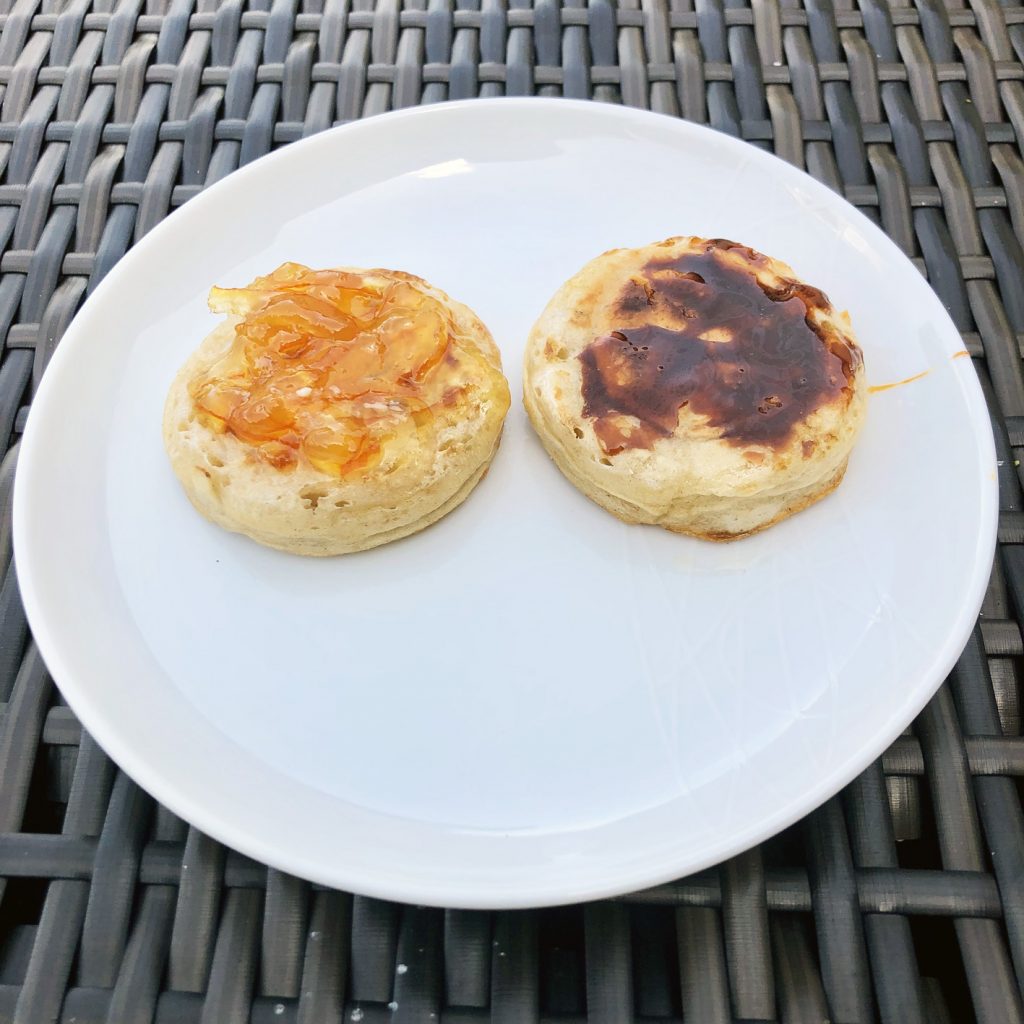 One of two recipes to use sourdough discard. A mixture of discard, flour, baking powder, salt and water was mixed into a batter. After a short rest crumpet rings heated in a frying pan were half filled with batter and within minutes firmed up and the characteristic holes on the surface of the crumpets started to appear.
One of two recipes to use sourdough discard. A mixture of discard, flour, baking powder, salt and water was mixed into a batter. After a short rest crumpet rings heated in a frying pan were half filled with batter and within minutes firmed up and the characteristic holes on the surface of the crumpets started to appear.
As a lover of marmite but also marmalade, I think both work equally well spread on the hot crumps.
Sweet Dough
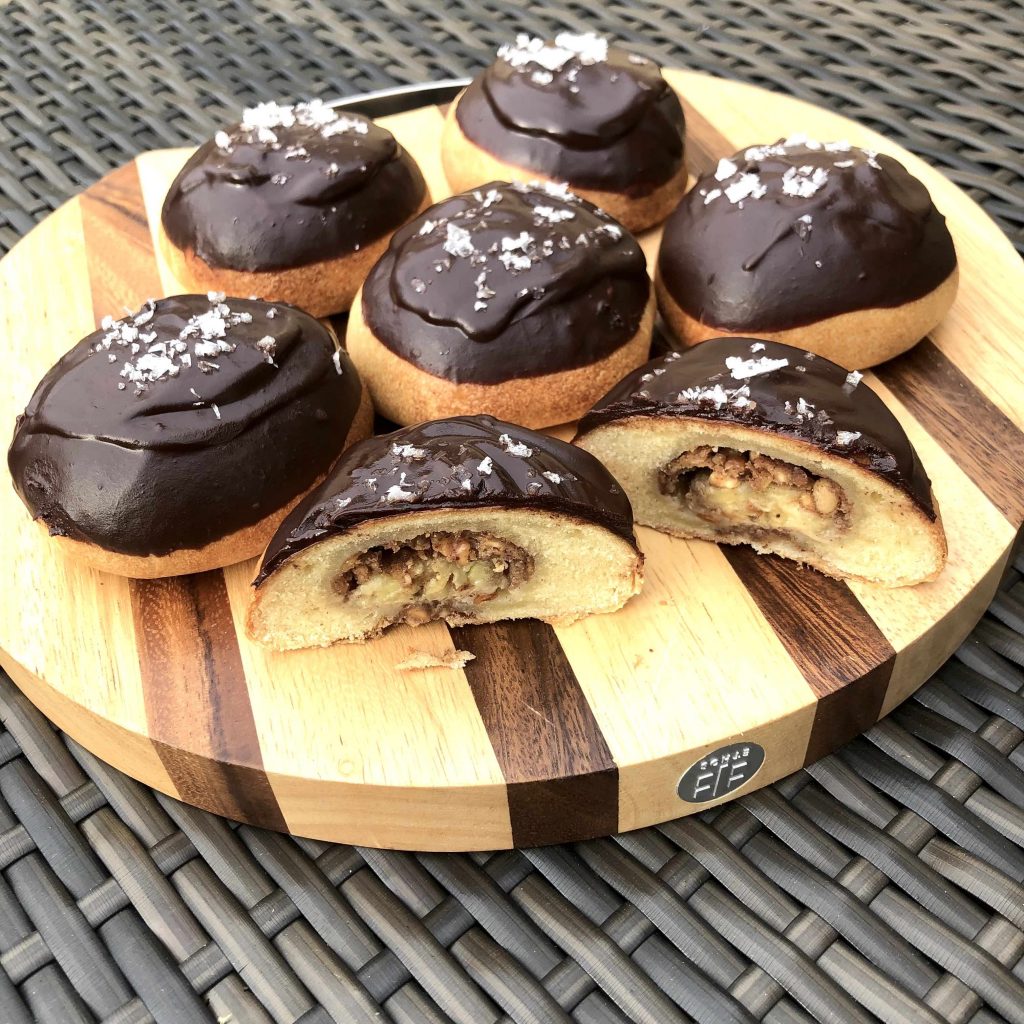 By the time I arrived at this section of the book, I was spoilt for choice as what to make. The Everything Dough ( p222) is a template for a number of recipes and it can be adapted for sweet or savoury bakes.
By the time I arrived at this section of the book, I was spoilt for choice as what to make. The Everything Dough ( p222) is a template for a number of recipes and it can be adapted for sweet or savoury bakes.
The Peanut Butter, Banana and Chocolate Buns captured my curiosity not least because of the unusual combination of flavours, something I realised is a theme within the book. Each bun is filled with peanut butter and banana and when baked and cooled, dipped in a mixture of chocolate, butter and cream.
Cookies
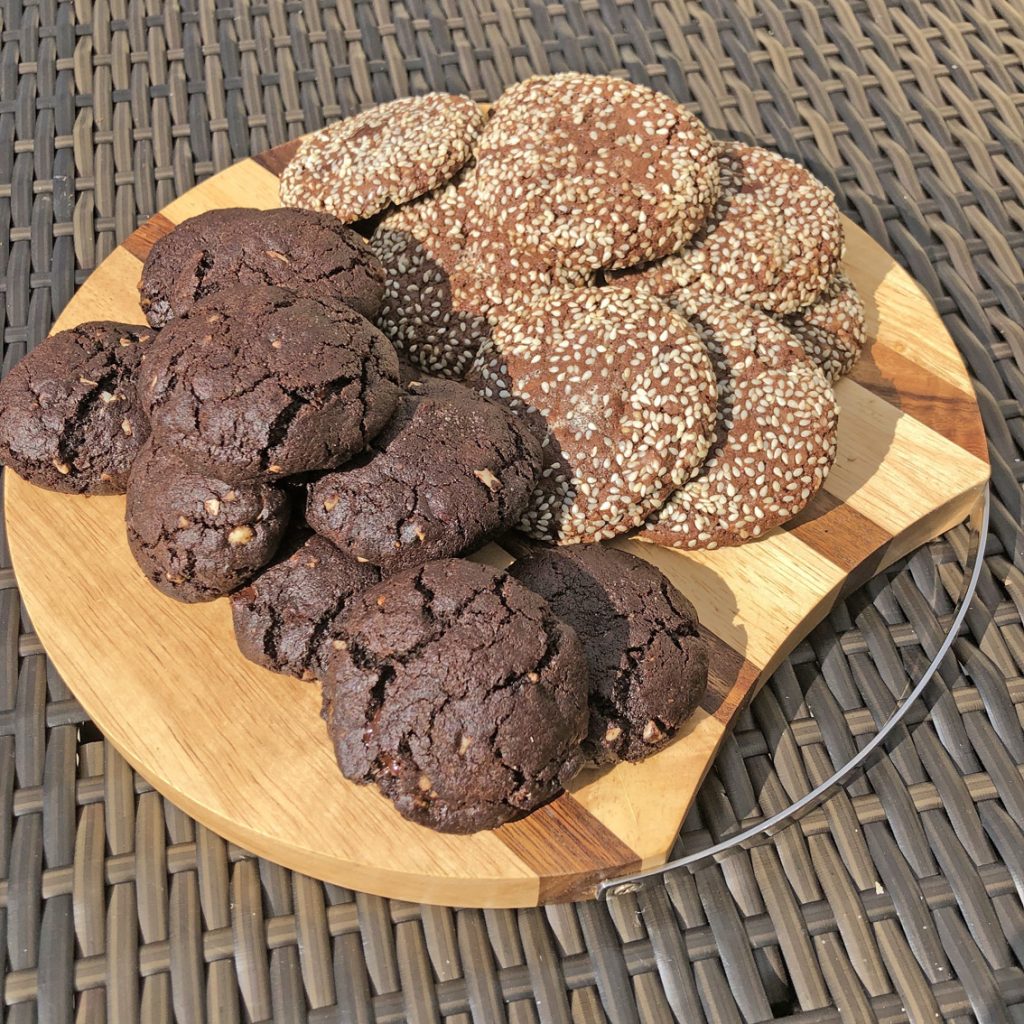 I often make cookies and felt I could not do a full review without trying a couple of the recipes.
I often make cookies and felt I could not do a full review without trying a couple of the recipes.
Once again an intriguing set of ingredients grabbed my attention. On tasting the Chocolate Tahini and Halva Cookies my eldest daughter exclaimed “OMG those Tahini ones.” Safe to say that recipe will be repeated. Similarly the Deconstructed Snickers were a hit and disappeared quickly.
Both recipes challenged the way I have made cookies in the past and helped me to improve my baking of these delectable sweet treats.
Eva’s Loaf p289
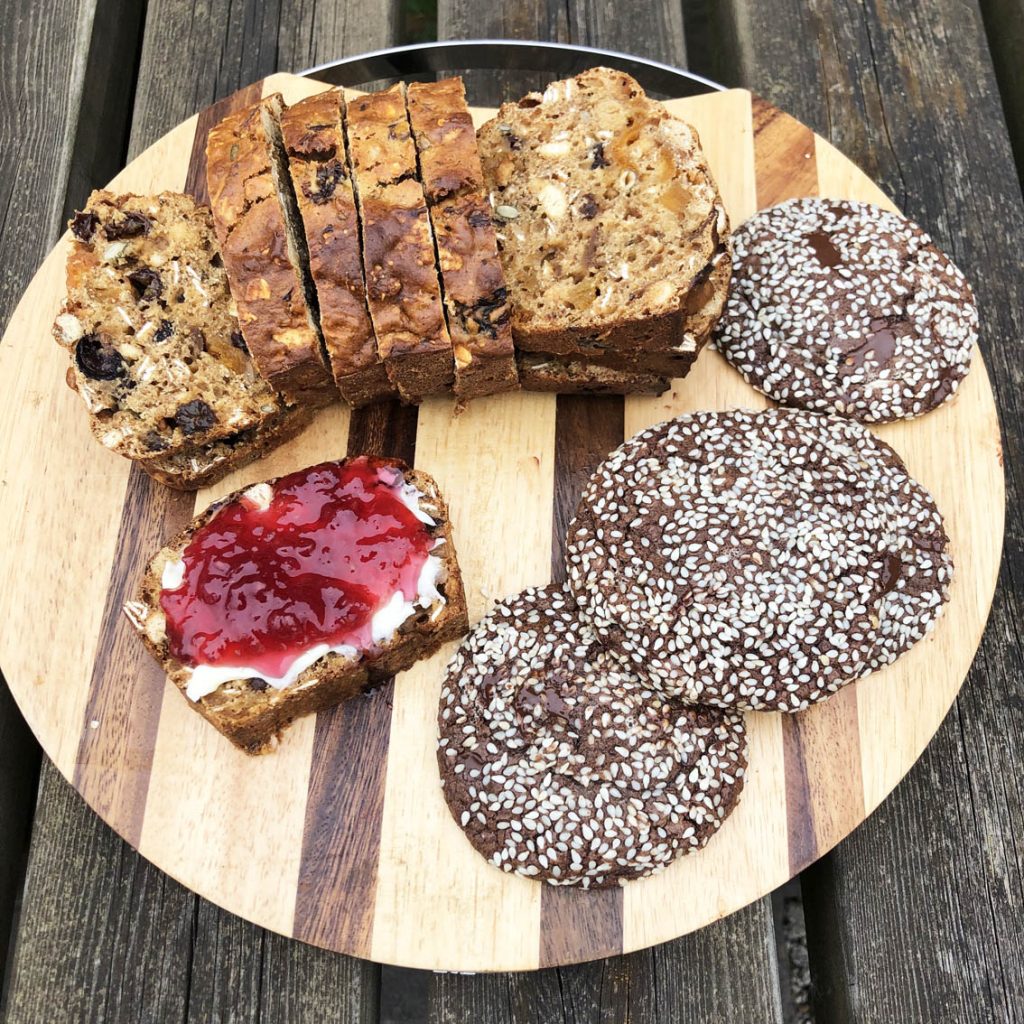 I often bake tea loaves for my 94 year old mother, as they can be sliced and packaged up for her whenever one of us goes to Brighton. This is a loaf packed full of fruit and a satisfying crunch from cereal and muesli. I pared it with jam but loved it just spread with butter.
I often bake tea loaves for my 94 year old mother, as they can be sliced and packaged up for her whenever one of us goes to Brighton. This is a loaf packed full of fruit and a satisfying crunch from cereal and muesli. I pared it with jam but loved it just spread with butter.
This is truly an original book, one of two halves. The first half is testimony to of how bread transforms lives, and reminded me of how in lockdowns during the pandemic sourdough was my saviour and gave me a focus during those weeks of isolation. The second half is a wealth of recipes to tempt the most experienced baker to try new flavour combinations that will be repeated in future.
Thank you Kitty and Al, a brilliant book.
Links to
Kitty and AL Tait Breadsong: How Baking Changed our Lives. (Blackwells)
Kitty and AL Tait Breadsong: How Baking Changed our Lives.( Amazon)
https://blackwells.co.uk/bookshop/product/9781526631855?gC=5a105e8b&gclid=EAIaIQobChMInbKQsebU9wIVw-3tCh3bTwOKEAQYAiABEgI5zfD_BwE
